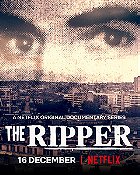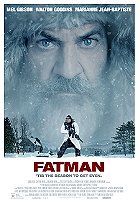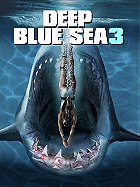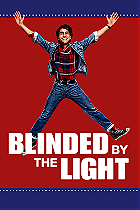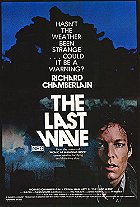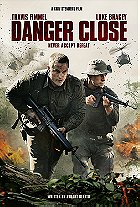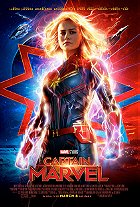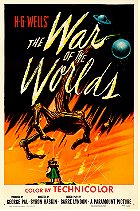After six long years and several Marvel Cinematic Universe misfires across film and television, 2023's Guardians of the Galaxy Vol. 3 is a powerful and timely reminder of why audiences fell in love with Marvel movies in the first place. Once again written and directed by the inimitable James Gunn (before he moves to DC Studios full-time), this is a rousing, visually arresting and hugely poignant threequel that represents a note-perfect farewell for our beloved Guardians. Gunn vehemently closes out his MCU tenure on his own terms; Guardians of the Galaxy Vol. 3 is expectedly funny with deep pathos, but the film is also the most thematically taxing and even emotionally fatiguing instalment of the trilogy. Additionally, Gunn prioritises proper storytelling and thoughtful character arcs which do not always align with fan expectations. In short, Guardians of the Galaxy Vol. 3 is precisely what the MCU needed this early in Phase Five, especially after the dismal misfire of Ant-Man and the Wasp: Quantumania, but it's unclear if this will prove to be a one-off hit or a promising sign of things to come.
After establishing their new headquarters on Knowhere, the titular Guardians are attacked by an artificially-created warrior named Adam Warlock (Will Poulter), who is charged with retrieving Rocket Raccoon (voiced by Bradley Cooper) but nearly kills the creature in the process. As the Guardians try to save Rocket, they discover a kill switch that prevents them from effectively treating his wounds, and promptly set out to find the override code. Thus, Peter Quill/Star-Lord (Chris Pratt), Drax the Destroyer (Dave Bautista), Nebula (Karen Gillan), Groot (voiced by Vin Diesel) and Mantis (Pom Klementieff) work to infiltrate a corporate space station containing all the information about Rocket's history, and are forced to enlist the help of the Ravagers in their mission. Soon joining the group is a variant of Gamora (Zoe Saldana), who now rides with the Ravagers and does not recall her history with the Guardians. The team finds that Rocket's past is tied to an unhinged scientist known as the High Evolutionary (Chukwudi Iwuji), who is determined to "perfect" the universe by creating a perfect society of peaceful lifeforms. Rocket's highly advanced brain is the key to the High Evolutionary's experimentations, and he remains fixated on retrieving what he believes is his property.
Guardians of the Galaxy Vol. 3 feels more like a "men on a mission" story than its predecessors, as the narrative is focused on the Guardians finding a way to save Rocket, though Gunn doesn't neglect heart or emotion amid the spectacle. The emotional core of the first movie related to the feeling of family between the misfit Guardians, while Vol. 2 was all about fathers and sons. Vol. 3's emotional core derives from Rocket's tragic backstory, which was alluded to in the previous movies (but not gratuitously set up) and is finally explored with thorough clarity here. Gunn has a lot of material to work through over the movie's beefy two-and-a-half-hour runtime, with respective character and story arcs demanding attention, and, even though it does feel long, it's not boring. The first act is a touch clunky from a pacing perspective, but it does play smoother on repeat viewings, and the ending leaves you wanting more.
With the marketing emphasising that this will be the final Guardians of the Galaxy movie (with this team, at least), a sense of dread permeates the proceedings as it's unclear whether or not the main characters will survive. Gunn plays into this with relish, and the white-knuckle tension during many of the action set-pieces is almost unbearable. Guardians of the Galaxy Vol. 3 is the darkest of the trilogy, featuring unsettling imagery and intense thematic material that pushes the boundaries of acceptability for a PG-13 comic book movie. It's frightening and even upsetting, and some viewers online are complaining that the film is not acceptable for younger audiences, but it is commendable that Gunn sticks to his guns (heh) and does not dilute the darker material for easier consumption. Besides, darkness is nothing new for the MCU, as Avengers: Infinity War and Avengers: Endgame were daring and dark, and were aimed more towards adults than children. Luckily, Gunn also successfully navigates the tricky tonal changes, delivering big laughs amid the mayhem and emotion. Gunn does occasionally go too far (Gamora sitting on the toilet feels cheap), but his comic timing is mostly spot-on, and he doesn't try to turn everything into a joke. Forced humour is ruining the MCU, making it all the more relieving that Gunn does not aim for a certain amount of jokes per minute. There are genuine stakes here, and the humour organically derives from the characters and their personalities. Whereas Thor: Love and Thunder felt like a cheap comedy, the story of Guardians of the Galaxy Vol. 3 is treated with sincerity and gravitas. Perhaps the most powerful scene involves the Guardians observing recordings of Rocket's heinous treatment at the hands of the High Evolutionary; Gunn conveys the horror through sounds as well as the Guardians' reactions, and the result is hugely affecting. Also of note are the scenes involving Rocket's anthropomorphic friends Lylla (Linda Cardellini), Teefs (Asim Chaudhry) and Floor (Mikaela Hoover). It's easy to become attached to these creatures, who were brought to life through miraculous motion capture technology, and their story is unspeakably poignant.
One of Vol. 3's key strengths is that it truly feels like a Guardians of the Galaxy movie instead of just another committee-designed MCU flick to continue the increasingly convoluted and frustrating multiverse story arc which was introduced during Phase Four. Gunn wrote the movie back in 2017 and 2018, and, by all accounts, the screenplay was fundamentally finished before his temporary firing. Luckily, Gunn avoids contrived MCU connections; instead, Vol. 3 is about the Guardians, their respective stories, and the main narrative, making it the most focused MCU production in some time. Equally welcome is the lack of agenda. Gunn could have dialled up Quill's innate goofiness and portrayed him as useless while bolstering the female characters, which is ostensibly Marvel's current modus operandi, but every character in the ensemble plays an important part in this story. Admittedly, Guardians of the Galaxy Vol. 3 does border on the preachy during its third act with themes relating to animal cruelty, but Gunn does not dwell on the messaging, and the execution is mostly well-judged.
For 2021's The Suicide Squad, Gunn was committed to practical effects, vast sets and authentic locations as opposed to computer-generated excess, and the result was one of the most visually unique comic book films in recent memory. Guardians of the Galaxy Vol. 3 finds the filmmaker returning to a more fantastical world, travelling between various planets and depicting aliens of all shapes, sizes and appearances. Naturally, there is a bigger reliance on CGI compared to The Suicide Squad, but Gunn still makes use of intricate sets, and there are plenty of prosthetics to bring the ensemble of otherworldly beings to life. (The production reportedly set a record for the most prosthetics used in a single motion picture.) The visual style is on-point with the MCU's established aesthetic, and the digital effects are a damn sight better than those glimpsed in the atrociously miscalculated Ant-Man and the Wasp: Quantumania. Not everything looks wholly authentic, but the illusion is sufficiently convincing, with nothing appearing phoney to spoil the experience. The standout action sequence occurs during the climax and involves an extended hallway fight - everything, from the careful camera movements to the outstanding fight choreography and the spectacular CGI, fires on all cylinders during this set-piece.
It goes without saying, but the soundtracks are one of the biggest draws of the Guardians of the Galaxy movies, and this threequel confidently continues the tradition. Gunn assembles another delightful selection of songs for Vol. 3, including music from the Beastie Boys, Alice Cooper, Radiohead, and even Florence + the Machine. The use of the track "Dog Days Are Over" gives the ending of the movie even more emotional power, showing yet again that Gunn's song selection talents are second-to-none. Composer John Murphy (The Suicide Squad, Kick-Ass) replaces Tyler Bates here, and it's a seamless transition, with the score thankfully making astute use of the flavoursome Guardians theme. Although the background music is somewhat generic at times, Murphy's score is frequently on-point, underscoring the excitement as well as the sense of emotion.
Iwuji is the biggest standout as the High Evolutionary, who is the most intimidating and fierce Marvel villain since Thanos, and is possibly the most detestable bad guy in the MCU to date. An excellent actor who's well-served by the material, Iwuji commands every frame and oozes menace, rendering him more compelling and fascinating than Jonathan Majors' Kang. It would be a waste if Iwuji's High Evolutionary was confined to a single movie. Thankfully, there is scarcely a weak link among the ensemble, with the primary cast effortlessly slipping back into their respective roles. The authentic love and camaraderie between the Guardians is one of the primary reasons why these movies work as well as they do, and it also helps that each member has their own unique personality; it's easy to become invested in the team and their journey. A lot is asked of Pratt here, in particular, and he confidently rises to the task, nailing the complex emotional range in every scene while still retaining his innate charisma and likeability. This is likely Bautista's final appearance as Drax the Destroyer, and his performance is superb; he remains a comedic force to be reckoned with while also showing incredible warmth. Another standout is newcomer Will Poulter as Adam Warlock, who was teased at the end of Vol. 2 and plays a meaty part in this story. It's hard to shake the feeling that many of the other newcomers are Gunn regulars, including Jennifer Holland (The Suicide Squad, Peacemaker), Daniela Melchior (The Suicide Squad), Iwuji (Peacemaker), and, of course, Nathan Fillion (who played a CGI alien in the first Guardians of the Galaxy movie). However, none of them stand out as miscast.
Guardians of the Galaxy Vol. 3 packs the MCU's most potent emotional punch since Avengers: Endgame back in 2019. At its core, this is a story about dealing with your baggage and deciding whether to move on or settle down in the face of change, while underscoring the importance of second chances. Given the richness of the material and how organic this story feels, it is hard to fathom that Gunn was not initially interested in writing or directing Vol. 3 after his work on the second movie, and Gunn was then temporarily fired from Disney before being reinstated after massive online support for the filmmaker. The audience benefits the most from Gunn returning to close out this trilogy, which marks the third time to date that a director has overseen an entire MCU trilogy (after Jon Watts' Spider-Man movies and Peyton Reed's Ant-Man trilogy). Considering that many were convinced that 2014's Guardians of the Galaxy would be Marvel's first flop, it's gratifying that the unexpected hit spawned a successful trilogy. Indeed, Guardians of the Galaxy is arguably the best MCU trilogy to date - it is certainly up there with the Captain America trilogy.
8.7/10
 Login
Login
 Home
Home 183 Lists
183 Lists 1668 Reviews
1668 Reviews Collections
Collections




 0 comments,
0 comments, 



